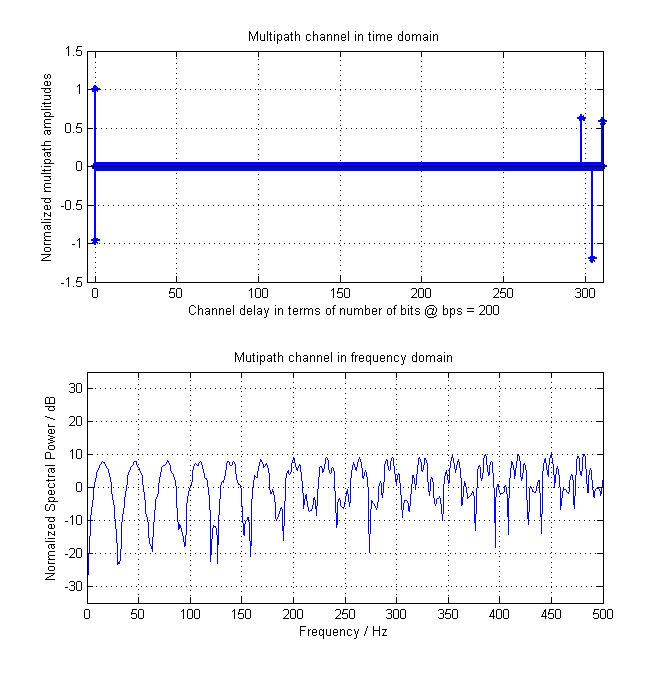I wanted to ping the DSP hivemind for general thoughts on what would be the best modulation type to use for low frequency underwater communications. I have chosen this project since I can learn a lot from it.
Some context:
- Low frequency as in < 500 Hz (for both carrier and modulated data obviously)
- BPS of say, 200 Hz would be good.
- Will certainly have multipath.
- Frequencies can be smeared due to doppler by a maximum factor of about 0.3% of the original frequency.
What I have found thus far:
- I was thinking about OFDM, but I have learnt that while channel estimation is much easier, it is much more sensitive to doppler effects.
- I was also thinking about chirp modulation, has anyone ever done something like that?
What are your thoughts?
Edit: I have attached some of what I believe are 'worst case' scenarios of the (multipath channel, for a bps = 200 Hz). The channel is in terms of number of bits in the time domain so you can more easily see how many bits pass before the next reflection arrives.
Case 1:  Case 2:
Case 2:  Case 3:
Case 3:  Case 4:
Case 4: 
Notes:
- As we can see, I almost always have a second path of nearly equal magnitude but opposite phase ready to stick it to my main path.
- For a packet of 1000 bits @ 200 bps, (5 seconds), I suppose the channel could change significantly... but at the same time, we have total control over the packet length and content.
- We may assume that frequency offsets due to doppler is relatively 'well behaved', ie, no sudden 'jerks'. Frequency offsets due to carrier mismatches can also be thought of as well behaved.
